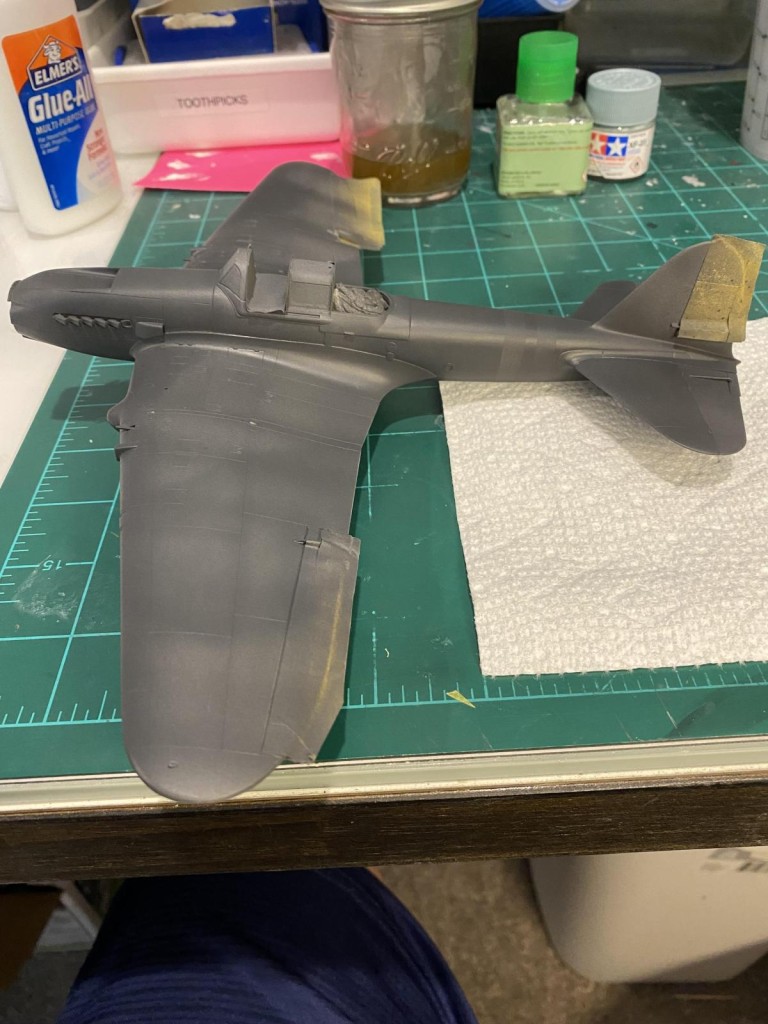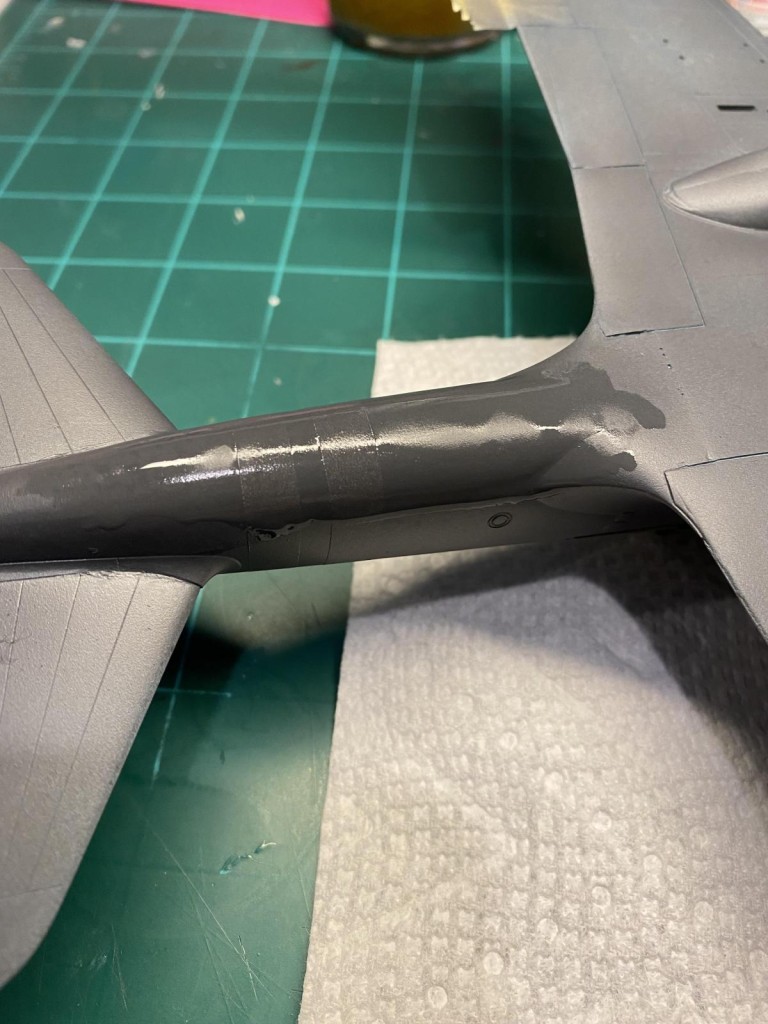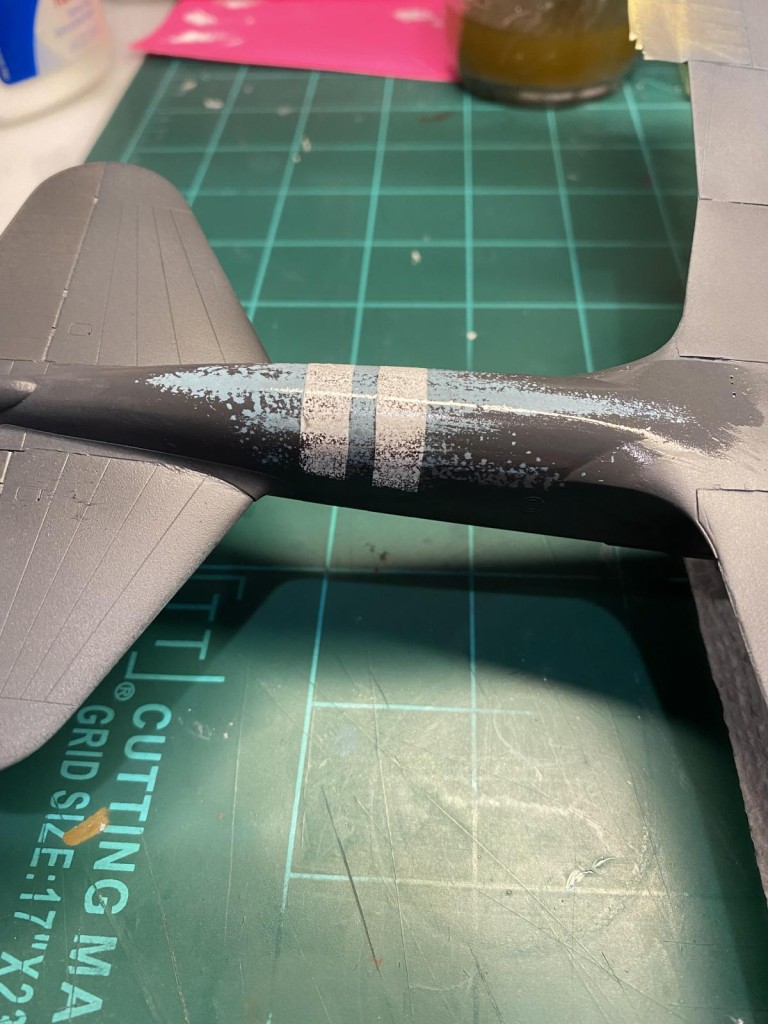Time to add the black over-spray. Thanks to my lack of planning, I had to replace the masks on the rudder and elevators, which I had foolishly removed too early. This was actually another mistake, more on this later.
I wanted to use chipping fluid to get the effects on the rear fuselage. My first step was to spray a layer of clear gloss on the areas that would later receive chipping fluid. This protects the underlying paint from possible damage that could occur when you are chipping.
You want to do the chipping fluid and the final paint in one sitting. When the clear gloss had dried, I loaded up the airbrush and sprayed the chipping fluid in the desired areas. You want to add the paint layer as soon as the fluid is dry. It is harder to use if you let it cure too long. I am sure you already know this, but the chipping process only works with acrylic paint.
At this point, I then plunged into the black over-spray. The over-spray on the actual aircraft has variously been described as either black or dark gray. I voted for a really dark gray created by adding some Tamiya dark gray to some Tamiya black. This layer has been described as faded to the point that you can see the camo and azur blue beneath the black. I wanted to build the layer slowly so I could control the opacity (is that a word?). I thinned the paint until it was about 80% X20 Thinner, and then started spraying. My airbrush was having fits for some reason, so I figure a complete tear-down and cleaning is in its future. I was sitting back admiring the translucent black when I realized I had left the masking on the ailerons which should be painted black along with the rest of the plane. Only the rudder should still be masked at this point. So, more to fix tomorrow.
-

1. Dark overspray added.
2. Forgot to take the masking off.
The chipping process is fairly easy. The only tools needed are some water, a soft brush to apply the water, a stiff brush to scrub the paint, and a toothpick. You first activate the chipping fluid layer by brushing water over the area. I then take a toothpick and lightly chip the paint where I want the larger chips to appear. Then it is a simple matter to start scrubbing the area with a stiff brush to start pulling the paint up. When you are satisfied with the effect, simply dry the area with a paper towel and let the paint cure overnight.
-

1. Tools needed for chipping.
-

1. Water brushed on to start the process.
-

1. Chipping process nearly done.
As I said earlier, only the rudder should have been masked when I was painting the black layer. I neglected to remove the tape from the ailerons, so I will need to fix that tomorrow. One step forward, two steps back. :o)